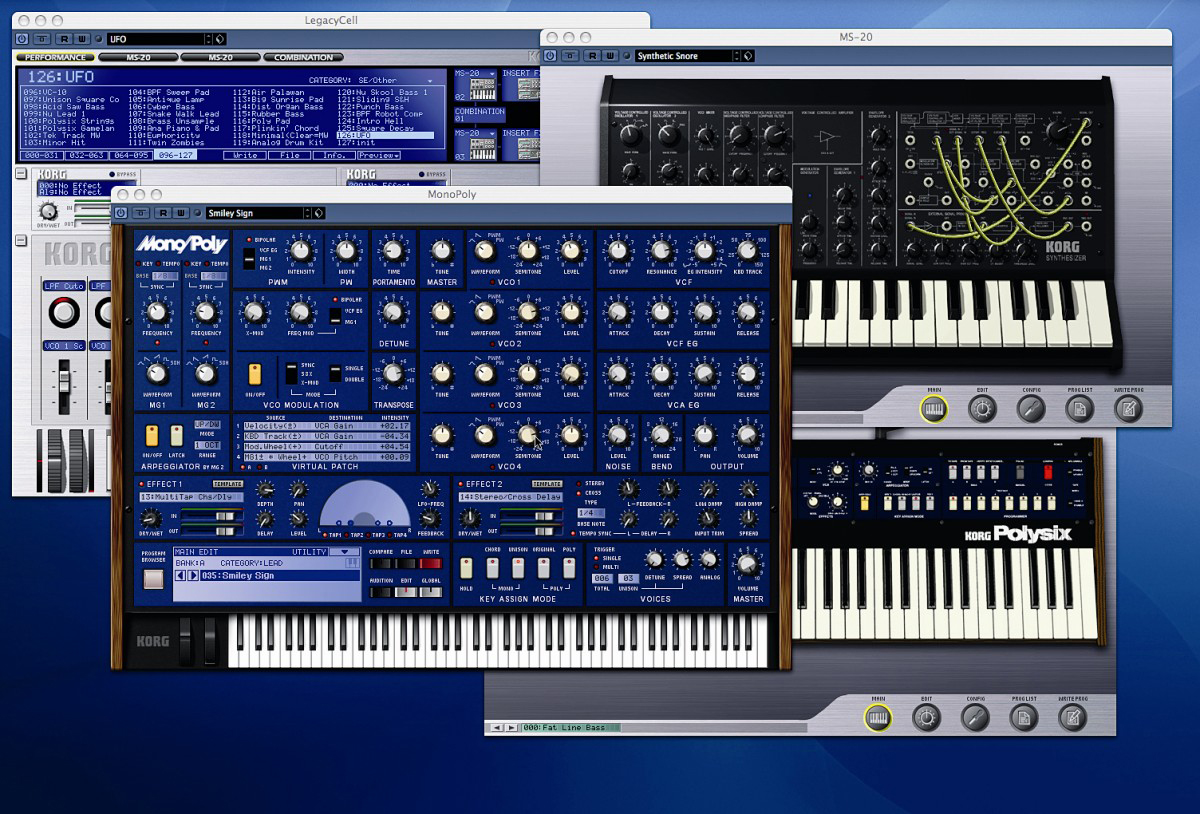MusicRadar Verdict
The Analog Edition 2007 bolsters Korg´s excellent reputation in the soft synth field. The Mono/Poly is a treat, while the other instruments sound as good as they ever did.
Pros
- +
Gotta love the Mono/Poly’s cross-modulation! The Mono/Poly oscillators are totally independent. MS-20 is still among the best clones on the planet. Legacy Cell is great.
Cons
- -
Extremely complex. You can’t use Mono/Poly in the Legacy Cell.
MusicRadar's got your back


The original Legacy Collection featured recreations of Korg's Wavestation, Polysix and MS-20 synths plus the powerful Legacy Cell. It also came with a diminutive USB controller that paid homage to the MS-20.
The Digital Edition, meanwhile, features the M1, the Wavestation and the MDE-X effects unit.
The Analog Edition 2007 is an evolution of the first Legacy Collection and adds an emulation of Korg's sleeper hit synth, the Mono/Poly. The MS-20 and Polysix are still here too, but the Wavestation remains in the Digital Edition.
Like the other synths, the Mono/Poly operates as a VST, RTAS and AU plug-in and can also be used standalone.
Mono/Poly
Released in 1981, the Mono/Poly was always an odd duck. This was because it had something of a split personality: the synth could be used as a four-voice polyphonic instrument or, by ganging all of the oscillators together, as a monophonic synthesizer that was capable of producing supremely thick and ballsy tones.
Only the bravest of users could get much use out of the hardware version in its polysynth guise, since each oscillator had to be adjusted separately. This was a dicey proposition at best, though a powerful one for those with the patience for it.
Want all the hottest music and gear news, reviews, deals, features and more, direct to your inbox? Sign up here.
Thankfully, the software Mono/Poly offers clever ways to circumvent the problems associated with the original and even turns them into assets. What we should say, though, is that the Legacy version of the synth remains true to the hardware's architecture in every important way.
There are four gnarly oscillators, each of which can output triangle, sawtooth and variable pulse waves. You can detune these as much as 24 semitones in both directions and adjust the levels of each one independently.
This flexibility really comes into its own when you start messing with the built-in arpeggiator. Though the oscillator section initially seems to be a little skimpy, a glance to the left of this knob-laden panel reveals some surprises.
Firstly, there's a section dedicated to pulse width, where you can assign the filter envelope or MG1/MG2 as a source of modulation (MG stands for Modulation Generator - that's an LFO to us Earthlings).
In addition, you can avail yourself of a rather splendid selection of cross-modulation tools. These bear some resemblance to those found on the Prophet-5 and are responsible for the generation of some of the weirder factory presets.
Unsurprisingly, you'll also find a low-pass resonant filter. There's nothing particularly unusual about this, but the sound it produces is exquisite. It squeals when you want it to, buzzes and belches when asked, and sounds convincingly transistorised. It'll track the keyboard, as well as snap to the attention of the dedicated VCF envelope generator.
This is one of a pair - the other being lashed to the VCA - and these are of the familiar ADSR variety.
Even better than the real thing
All of these features alone would make the software Mono/Poly fit to wear the name of its wood and metal grandad, but Korg has also piled on some more modern conveniences.
These include twin effects generators and a modulation matrix that enables a whopping 159 sources to modulate 35 parameters. Synth maniacs will eat it up.
If the screenshots seem to be a little intimidating, fear not, for the Mono/Poly is furnished with some useful patch creation and management utilities that will prevent your synthesizing knickers from getting too twisted.
You can easily swap the settings of the MGs, ADSRs and effects pairs, while copying and pasting of the oscillator, envelope, effect generator and other settings is possible too. You can also call up basic 'starter' patches from different categories, and there's even a chord memory tool.
The other synths
The MS-20 and the Polysix remain as awesome as they were in the first Legacy Collection. We'd still like to see a few more patches for them, but at least those that are included are actually good, which is more than you can say for some soft synths. Oh well - at least there are the Legacy Cell banks to keep us entertained.
It's the inclusion of the Mono/Poly that really makes this bundle worthwhile, though. It's a megalithic monster of a synthesizer that would be worth the price of admission all by itself.
It makes upgrading a no-brainer, and has more than enough about it to strengthen the appeal of the Legacy Collection as a whole.
MusicRadar is the number 1 website for music makers of all kinds, be they guitarists, drummers, keyboard players, djs or producers...
GEAR: We help musicians find the best gear with top-ranking gear round-ups and high- quality, authoritative reviews by a wide team of highly experienced experts.
TIPS: We also provide tuition, from bite-sized tips to advanced work-outs and guidance from recognised musicians and stars.
STARS: We talk to musicians and stars about their creative processes, and the nuts and bolts of their gear and technique. We give fans an insight into the actual craft of music making that no other music website can.
